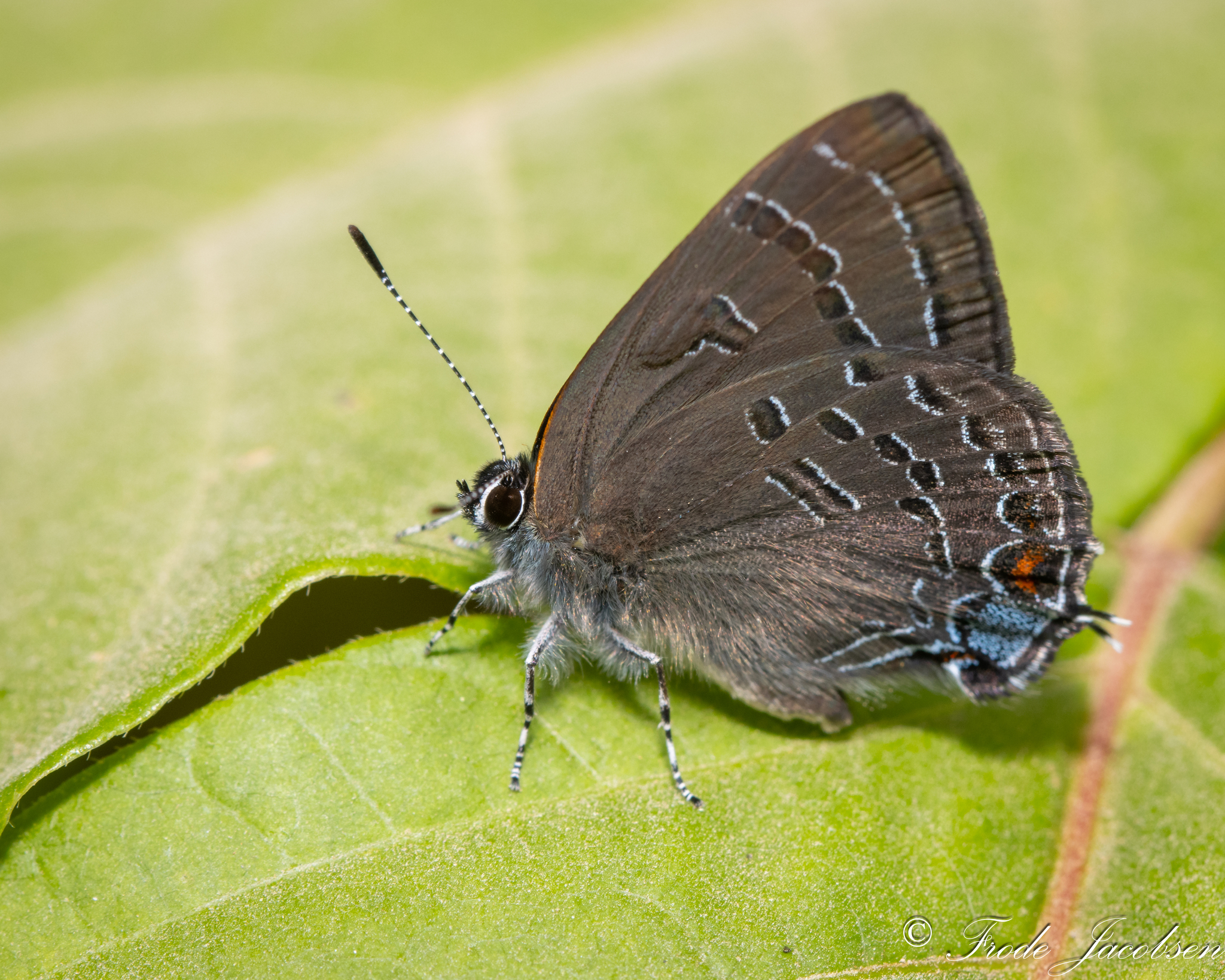Map Snapshot
























212 Records
Status
Perhaps as a result of its marked generalist tendencies with regard to host plants, the Banded Hairstreak (Satyrium calanus) is Maryland's most common Satyrium hairstreak. Still, like most hairstreaks, encounters are still typically uncommon. Banded Hairstreak occurs statewide, and has a single brood, flying from about mid-June into early July (Butterflies of Maryland: A Biological Summary and Checklist by Lynn Davidson & Richard Smith).
Description
Grayish-brown, with darker bands on the wings. This species typically has the postmedian bands with white edging only on the outer border, but very seldom on the inner. It also typically lacks an orange cap on the blue patch on the hindwing (Brock & Kaufman, 2003).
Where To Find
Look for Banded Hairstreaks in open canopy woods and also around patches of blooming milkweed. They can also often be found basking on sunlit leaves in deciduous forest.
Relationships
Banded Hairstreaks use various trees and shrubs as host plants including Box Elder (Acer negundo), Pignut Hickory (Carya glabra), Shagbark Hickory (Carya ovata), Mockernut Hickory (Carya tomentosa), American Chestnut (Castanea dentata, Butternut (Juglans cinerea), Black Walnut (Juglans nigra), White Oak (Quercus alba), Bur Oak (Quercus macrocarpa), Southern Red Oak (Quercus falcata), Northern Red Oak (Quercus rubra), Chestnut Oak (Quercus montana), and Bear Oak (Quercus ilicifolia).
Seasonality Snapshot
Source: Wikipedia
| Banded hairstreak | |
|---|---|

| |
| Scientific classification | |
| Domain: | Eukaryota |
| Kingdom: | Animalia |
| Phylum: | Arthropoda |
| Class: | Insecta |
| Order: | Lepidoptera |
| Family: | Lycaenidae |
| Genus: | Satyrium |
| Species: | S. calanus
|
| Binomial name | |
| Satyrium calanus | |
| Subspecies | |
|
Four, see text | |

| |
| Synonyms | |
| |
Satyrium calanus, the banded hairstreak, is a butterfly in the family Lycaenidae.
Appearance, behavior, and distribution
[edit]The banded hairstreak is a common hairstreak east of the Rocky Mountains in North America. It is a territorial butterfly that will challenge other butterflies invading its territory.

Subspecies
[edit]Listed alphabetically:[2]
- S. c. albidus Scott, 1981
- S. c. calanus
- S. c. falacer (Godart, [1824])
- S. c. godarti (Field, 1938)
Life cycle
[edit]Eggs are laid singly on the host plants and hatch in the spring. There is a single brood that flies early June to late August.[3]
Host plants
[edit]Host plants include oak, hickory, and walnut (especially butternut).[4]
Similar species
[edit]- Edwards' hairstreak (S. edwardsii)
- Hickory hairstreak (S. caryaevorum)
References
[edit]- ^ "NatureServe Explorer 2.0 Satyrium calanus Banded Hairstreak". explorer.natureserve.org. Retrieved 27 September 2020.
- ^ a b Satyrium calanus at Markku Savela's Lepidoptera and Some Other Life Forms
- ^ Nielsen, Mogens C. (1999). "Harvesters, Coppers, Hairstreaks, Blues". Michigan Butterflies & Skippers A Field Guide and Reference. Michigan State University Extension. p. 73. ISBN 1-56525-012-5.
- ^ Hall, Peter W.; Jones, Colin D.; Guidotti, Antonia; Hubley, Brad (2014). The ROM Field Guide to the Butterflies of Ontario. Toronto, Canada: Royal Ontario Museum. pp. 172–173. ISBN 978-0-88854-497-1.
External links
[edit]- Banded hairstreak, Butterflies of Canada
























